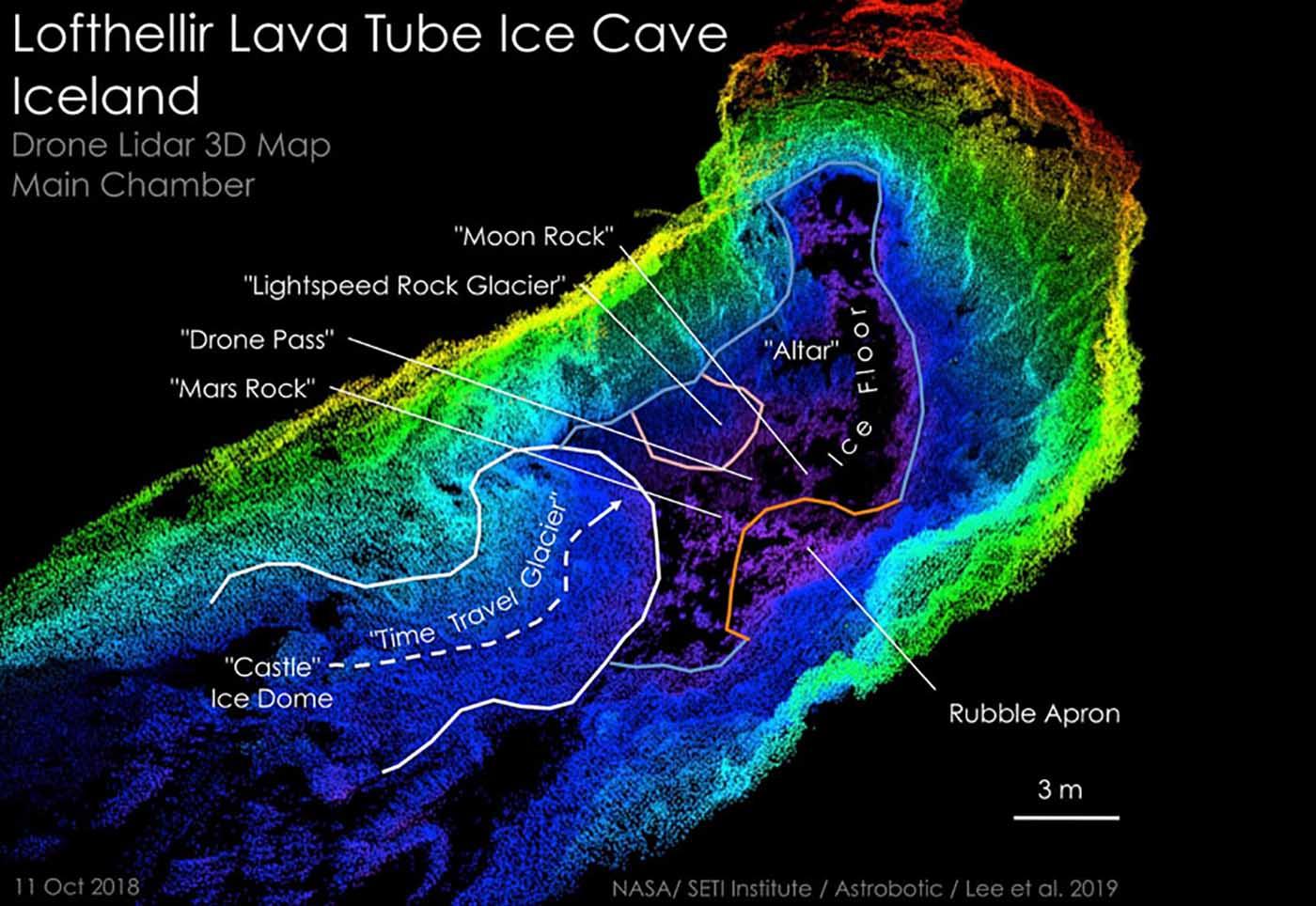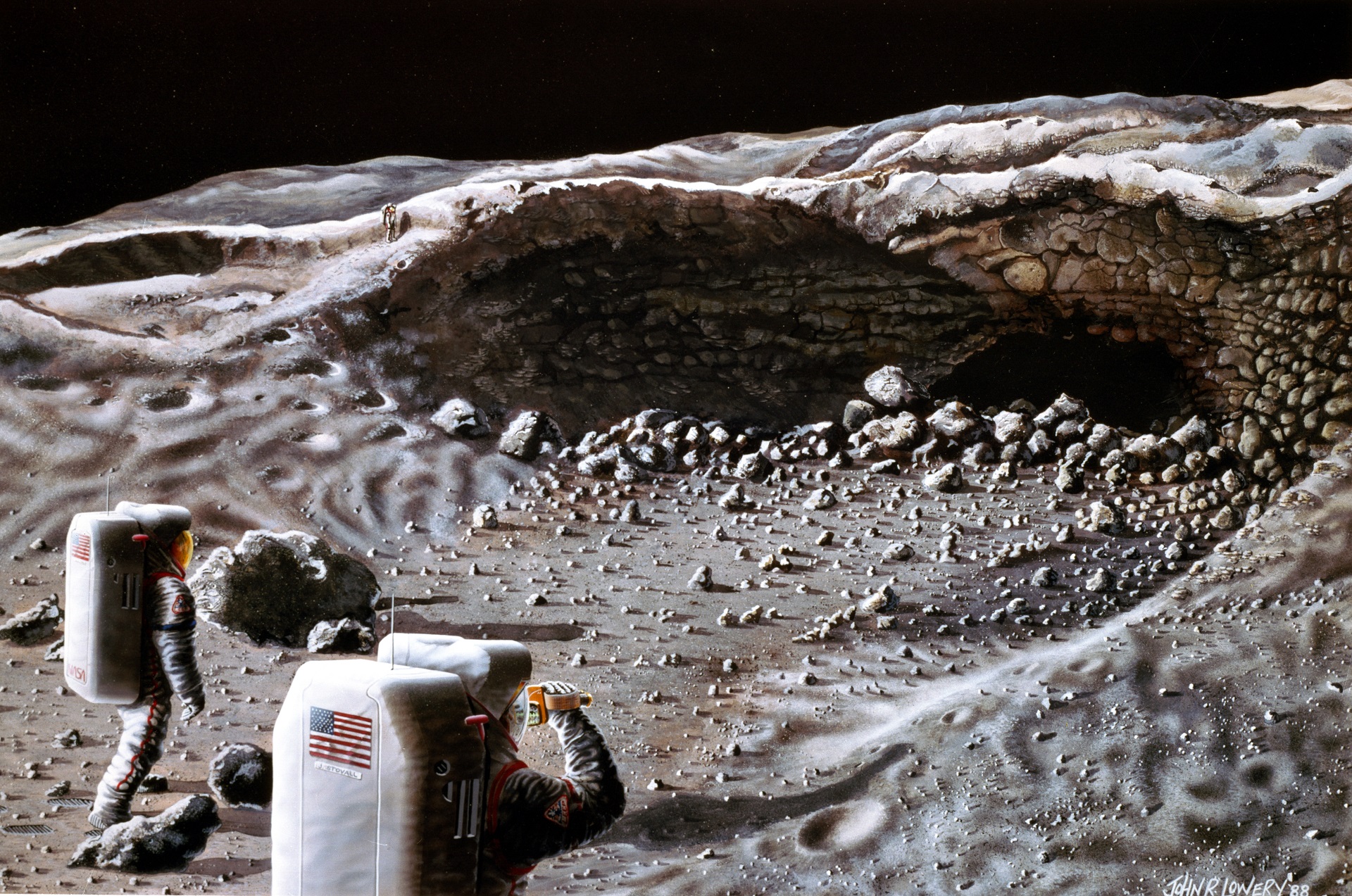Lunar Caves Exploration

Nasa moon caves – NASA’s exploration of lunar caves has a long history, dating back to the early days of the space program. In 1969, the Apollo 11 astronauts became the first humans to walk on the Moon, and they collected samples of lunar rocks and soil. These samples were analyzed by scientists, who found that they contained evidence of water ice. This discovery led to the development of the Lunar Reconnaissance Orbiter (LRO), which was launched in 2009. The LRO has mapped the Moon’s surface in detail, and it has identified hundreds of potential lunar caves.
NASA’s discovery of moon caves has sparked renewed interest in lunar exploration. These caves, which may have been formed by ancient lava flows, could provide shelter for future astronauts and serve as a base for scientific research. One of the most ambitious plans for lunar exploration is being spearheaded by Elon Musk , who aims to establish a permanent human settlement on the Moon.
Musk’s plans rely on the use of reusable rockets and spacecraft, which would significantly reduce the cost of lunar exploration. If successful, Musk’s plans could pave the way for a new era of human exploration of the Moon and beyond.
Exploring lunar caves is a challenging and risky endeavor. The caves are often deep and narrow, and they can be filled with sharp rocks and ice. The temperature inside the caves can also be extreme, ranging from -170 degrees Fahrenheit to 120 degrees Fahrenheit. Despite these challenges, there are several reasons why scientists are interested in exploring lunar caves.
Scientific Discoveries
Lunar caves could contain a wealth of scientific information. The caves could provide evidence of past life on the Moon, and they could also help scientists to understand the Moon’s geological history. The caves could also be used as a base for future human missions to the Moon.
The vast expanse of the cosmos holds many secrets, and the moon’s enigmatic caves may be one of them. As the world grapples with the escalating russia ukraine war russian , it is a reminder that even in the face of conflict, scientific exploration continues.
These lunar caves, once hidden in shadow, could potentially reveal clues about the moon’s origins and perhaps even the existence of extraterrestrial life.
Technological Advancements for Cave Exploration: Nasa Moon Caves
Lunar cave exploration presents unique challenges that require innovative technologies. Engineers and scientists are developing a range of cutting-edge tools and instruments to overcome these challenges.
These technologies have the potential to revolutionize not only lunar cave exploration but also other areas of space exploration, enabling us to probe the depths of extraterrestrial environments like never before.
Robotic Rovers
- Robotic rovers are equipped with advanced sensors, cameras, and navigation systems to autonomously explore lunar caves.
- They can traverse difficult terrain, collect samples, and transmit data back to Earth.
- Rovers like NASA’s VIPER (Volatiles Investigating Polar Exploration Rover) are designed specifically for lunar cave exploration.
Laser Scanning
- Laser scanning uses lasers to create detailed 3D maps of lunar caves.
- This technology allows scientists to study cave morphology, identify potential hazards, and plan exploration missions.
- Laser scanners like the Lunar Reconnaissance Orbiter’s LOLA (Lunar Orbiter Laser Altimeter) have provided valuable data on lunar cave entrances.
Imaging Techniques
- Imaging techniques, such as thermal imaging and hyperspectral imaging, can reveal hidden features and composition of lunar caves.
- Thermal imaging can detect temperature variations that may indicate the presence of water or other volatiles.
- Hyperspectral imaging can identify different minerals and organic compounds, providing insights into the geological and biological history of lunar caves.
Communication and Navigation Systems
- Reliable communication and navigation systems are essential for lunar cave exploration.
- Advanced radio systems and autonomous navigation algorithms allow rovers and astronauts to navigate complex cave environments.
- Technologies like the Lunar Laser Communication Demonstration (LLCD) have demonstrated high-speed data transmission in lunar environments.
Moon Cave Analogs

Lunar caves are intriguing geological features that offer potential shelter, scientific insights, and resource utilization for future lunar exploration missions. To prepare for future exploration, scientists and engineers utilize Earth-based analogs to simulate and study lunar cave environments.
Earth-based analogs to lunar caves include lava tubes, sea caves, and ice caves. Lava tubes are formed by the cooling of molten lava, creating long, winding tunnels. Sea caves are formed by the erosion of coastal cliffs by waves and tides. Ice caves are formed by the melting of glaciers or ice sheets, creating intricate networks of tunnels and chambers.
Lava Tubes as Analogs
Lava tubes are considered valuable analogs for lunar caves due to their similar geological formations. Lava tubes on Earth provide insights into the processes that shape lunar caves, such as lava flow dynamics and cooling patterns. Studying lava tubes helps researchers understand the potential hazards and challenges associated with exploring lunar caves, such as unstable rockfalls and extreme temperatures.
Sea Caves as Analogs, Nasa moon caves
Sea caves offer an analog for studying the effects of water on lunar caves. Lunar caves may have been exposed to water in the past, and sea caves provide a natural laboratory to investigate the potential impact of water on cave formation and habitability. Sea caves also serve as a testbed for developing technologies and techniques for exploring water-filled lunar caves.
Ice Caves as Analogs
Ice caves provide an analog for studying the potential presence of ice in lunar caves. Lunar caves may contain ice deposits, which could be a valuable resource for future lunar missions. Ice caves on Earth offer insights into the formation, stability, and distribution of ice in caves, helping researchers understand the potential for ice resources on the Moon.
Limitations and Advantages of Analogs
While Earth-based analogs provide valuable insights into lunar caves, they also have limitations. Analogs may not fully replicate the conditions and characteristics of lunar caves, such as the presence of radiation, low gravity, and unique lunar minerals. Additionally, studying analogs requires extrapolation and interpretation, which can introduce uncertainties into the research.
Despite these limitations, Earth-based analogs play a crucial role in preparing for lunar cave exploration. They provide a cost-effective and accessible way to study lunar cave environments, develop technologies, and train astronauts. Analogs help researchers refine exploration strategies, identify potential hazards, and optimize mission planning for future lunar cave exploration.